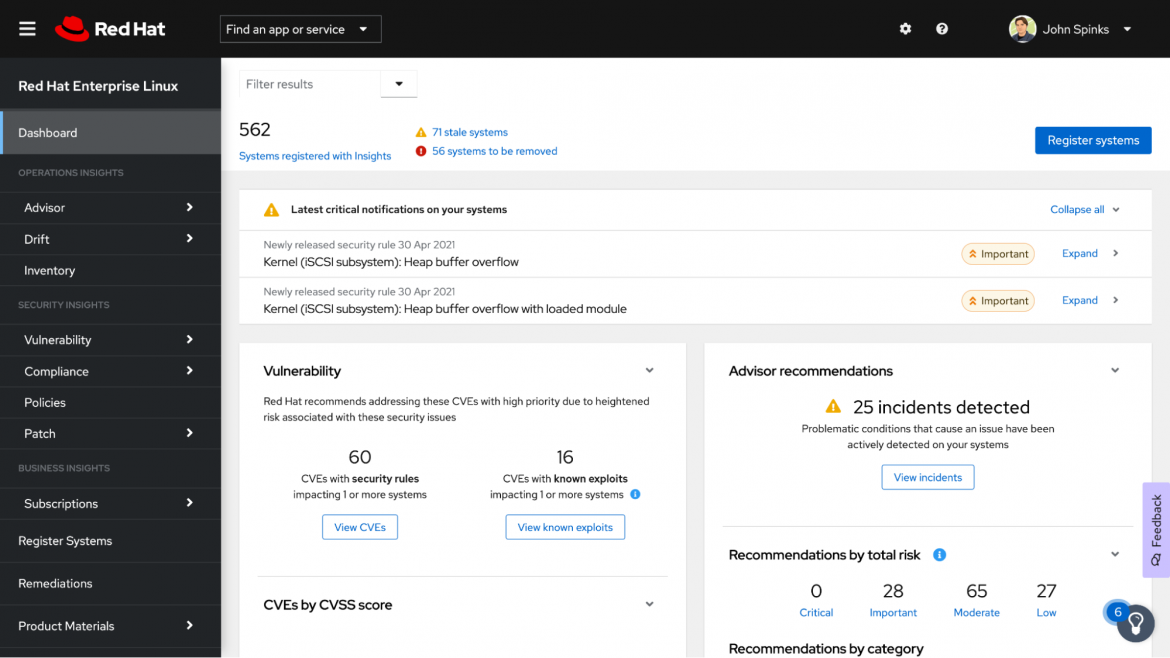Red Hat blog
At Red Hat (and elsewhere) we use the term Day 2 operations quite a bit, but what does that mean exactly? In this post, we will outline why Day 2 operations are important and explore how products such as Red Hat OpenShift and Red Hat Enterprise Linux (RHEL) work to optimize your software’s post-installation performance.
Red Hat named a Leader in the 2023 Gartner® Magic Quadrant™
Red Hat was positioned highest for ability to execute and furthest for completeness of vision in the Gartner 2023 Magic Quadrant for Container Management.
What are Day 2 operations?
Imagine you're moving into a house. If Day 1 operations are moving into the house (installation), Day 2 operations are the “housekeeping” stage of a software’s life cycle. The care and feeding of the software, maintaining the overall stability and health of your software in production.
We talk about three stages of operations: Day 0, Day 1, and Day 2. Day 0 is the “design” stage, where we figure out what resources and requirements are needed to get it all up and running.
Day 1 operations describe the “deployment” stage, where we actually install, set up, and configure our software.
Finally, Day 2 is the “maintenance” stage. Think of Day 2 as everything you do to make sure your software is cared for and healthy.
In addition to monitoring how your software is working, Day 2 operations might also entail routine tasks such as installing upgrades and updating systems.
The importance of planning for Day 2 operations
It's important to have Day 2 operations in mind when laying the groundwork for your software in Day 0 and Day 1, especially for cloud-native technologies. Having the right maintenance tools in place earlier on will help your organization avoid issues in the future.
Some common challenges during Day 2 operations include having trouble visualizing the performance of your software and difficulty integrating updates. Managing all the moving parts of your software is especially challenging with cloud-native systems such as Kubernetes, as they become increasingly more complex with scale.
If you don’t have a way to easily visualize and view your system's status and performance, it can ultimately spell the end of your new software initiative.
How does Red Hat support Day 2 operations?
Red Hat Enterprise Linux (RHEL) supports Day 2 operations in a variety of ways.
For example, Red Hat Insights, which is included as part of the RHEL subscription, helps increase operational efficiency in the areas of performance, stability and availability. This includes tools for security and compliance use cases.
In addition to reporting, Insights can also generate Ansible playbooks to mitigate identified problems. These playbooks could be executed via Ansible Engine on the individual server or through Ansible Tower. The set of rules is maintained and regularly expanded by Red Hat.

Figure 1: The Red Hat Insights dashboard gives an overview of your systems as well as potential problems in security and vulnerability.
Red Hat Satellite is an infrastructure management product specifically designed to keep Red Hat Enterprise Linux environments and other Red Hat infrastructure running efficiently. Satellite is very much your friend for Day 2 operations.
By automating most system maintenance tasks, Red Hat Satellite can help organizations increase efficiency, reduce operational costs and enable IT to better respond to strategic business needs.
With Red Hat Satellite, you can ensure a standard operating environment (SOE) by getting updates on security patches, updates, and enhancements. In addition, you can quickly improve system security by patching multiple systems all at once. For example, with automated patches, you can quickly improve system security by patching hundreds or thousands of systems all at once.

Figure 2: The Red Hat Satellite insights dashboard also shows you the overall risk level of your systems.
Red Hat OpenShift 4
Red Hat OpenShift is the leading enterprise Kubernetes platform, built for an open hybrid cloud strategy.
Red Hat OpenShift 4 supports Day 2 operations in many ways. Here are just a few:
Logging: As a cluster administrator, you can deploy OpenShift Logging to aggregate the logs from your OpenShift Container Platform cluster, such as node system audit logs, application container logs, and infrastructure logs.
Monitoring: OpenShift Container Platform helps deliver monitoring best practices out of the box. Default dashboards in the OpenShift Container Platform web console include visual representations of cluster metrics to help you to quickly understand the state of your cluster.
Updating Clusters: The OpenShift Container Platform update service is the hosted service that provides over-the-air updates to both OpenShift Container Platform and Red Hat Enterprise Linux CoreOS (RHCOS).
It provides a graph, or diagram that contains vertices and the edges that connect them, of component Operators. The edges in the graph show which versions you can safely update to, and the vertices are update payloads that specify the intended state of the managed cluster components.

Figure 3: The Red Hat OpenShift overview dashboard gives you a concise look at the status of your clusters.
Conclusion
Day 2 operations aren't just an important part of a software’s life cycle. They're the bulk of your software's life cycle, keeping the workloads running day in and day out.
Maintaining, monitoring and upgrading software? Those are all Day 2 operations. Things that may not be immediately obvious when you test drive software, but are critical for production workloads.
In this post, we’ve outlined just a few examples of Day 2 operations and some hurdles you might run into while operating software day to day.
Additionally, we’ve looked at some ways in which Red Hat supports Day 2 Operations. With RHEL, OpenShift, Insights, Satellite and other Red Hat products and services, we work to make it easy -- or at least easier -- to manage your open hybrid cloud infrastructure.
About the author
Bill Cozens is a recent UNC-Chapel Hill grad interning as an Associate Blog Editor for the Red Hat Blog.

